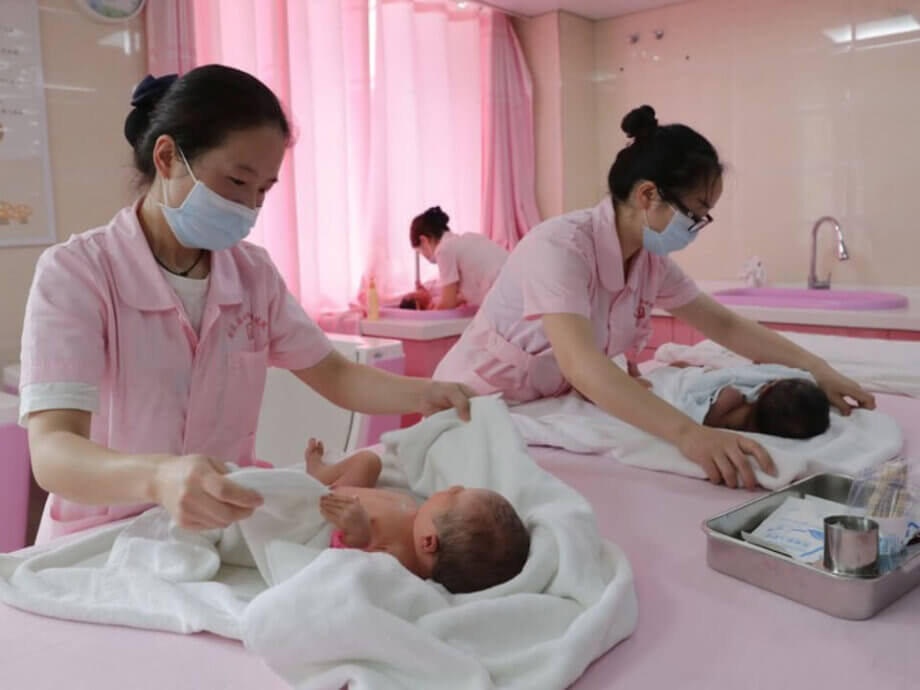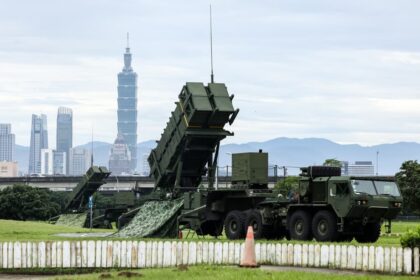China’s New Birth Subsidy Policy: A National Response to a Demographic Challenge
China, once known for its strict one-child policy, is now facing a demographic crisis that threatens its economic future. In response, the government is preparing to launch a nationwide birth subsidy program in 2025, offering families 3,600 yuan (about $500) per year for each child born on or after January 1, 2025, until the child turns three. This move marks a significant shift in policy, as the country grapples with a declining birth rate, an aging population, and the economic risks these trends pose.
- China’s New Birth Subsidy Policy: A National Response to a Demographic Challenge
- Why Is China Facing a Population Crisis?
- How Does the New Subsidy Program Work?
- Do Cash Incentives Really Boost Birth Rates?
- Beyond Cash: Building a Birth-Friendly Society
- Economic Implications: Why Birth Rates Matter for China’s Future
- Public Response and the Road Ahead
- In Summary
The new policy is part of a broader effort to encourage childbirth and support families, as China’s population has declined for three consecutive years. In 2024, the number of new births was just 9.54 million—half the 18.8 million recorded in 2016, the year China ended its one-child policy. The government’s hope is that direct financial support will help reverse this trend and secure the country’s long-term economic stability.
Why Is China Facing a Population Crisis?
China’s demographic challenges are rooted in decades of population control policies and rapid social change. The one-child policy, introduced in 1979, was designed to curb population growth but has left a legacy of low fertility rates and a rapidly aging society. Even after the policy was relaxed in 2016 to allow two children, and again in 2021 to permit three, birth rates have continued to fall.
Several factors contribute to this decline:
- Rising Costs of Childrearing: The average cost of raising a child to age 18 in China is estimated at nearly seven times the country’s per capita GDP, making parenthood a daunting financial prospect for many families.
- Changing Social Values: Urbanization, higher education levels, and increased career opportunities for women have shifted priorities, with many young people delaying or forgoing marriage and children.
- Work-Life Balance: Demanding work cultures, especially in major cities, make it difficult for parents to balance careers and family life.
- Regional Disparities: Wealthier regions like Shanghai and Beijing have some of the lowest birth rates, while less developed provinces maintain higher fertility rates, often due to cultural traditions and lower living costs.
According to United Nations projections, China’s population could fall to 1.3 billion by 2050 and below 800 million by 2100 if current trends continue. This would have profound implications for the country’s labor force, economic growth, and social welfare systems.
How Does the New Subsidy Program Work?
The nationwide subsidy will provide 3,600 yuan per year for each child born from 2025 onwards, until the child turns three. This is a departure from previous local policies, which often targeted only second or third children. By including firstborns, the government aims to make the incentive more universal and impactful.
Local governments have already experimented with various forms of financial support. For example, Hohhot, the capital of Inner Mongolia, recently announced some of the country’s most generous subsidies: 10,000 yuan for a first child, 50,000 yuan for a second, and 100,000 yuan for a third, paid out in annual installments. Other cities, like Tianmen in Hubei province, have seen a 17% increase in births after introducing similar measures.
However, the national program’s scale is still modest compared to the overall cost of raising children. Michelle Lam, Greater China economist at Societe Generale, estimates that the subsidies will account for just 0.1% of China’s GDP—a small but symbolically important step.
Do Cash Incentives Really Boost Birth Rates?
The effectiveness of financial incentives in raising birth rates is a subject of debate among experts. International experience suggests that while cash subsidies can have a positive impact, they are rarely sufficient on their own to reverse long-term demographic trends.
In Tianmen, the introduction of birth subsidies led to a notable increase in births, outpacing the national average. Demographer Huang Wenzheng found that investing 0.87% of the city’s economic output in birth incentives resulted in a 0.1 percentage point rise in the local fertility rate. This aligns with global findings: every 1% of GDP spent on birth incentives typically yields a 0.1 percentage point increase in fertility rates.
Yet, to reach the replacement fertility rate of 2.1 children per woman, China would need to invest 30 to 50 times more than current levels, according to Huang. The current fertility rate hovers around 1.0, far below the level needed to maintain a stable population.
Lessons from Other Countries
Other East Asian countries facing similar demographic challenges have also turned to subsidies. South Korea increased its child care payments in 2024, resulting in a 3.1% rise in births—the first uptick in nine years. Japan, meanwhile, has found that expanding childcare facilities and non-monetary support can be as effective as direct cash payments in encouraging families to have more children.
These examples suggest that while financial incentives help, broader social policies—such as affordable childcare, extended parental leave, and flexible work arrangements—are crucial for sustained impact.
Beyond Cash: Building a Birth-Friendly Society
Recognizing the limitations of cash subsidies, Chinese policymakers are also focusing on creating a more supportive environment for families. The government’s latest work report emphasizes not only financial support but also the expansion of childcare services, increased public preschool places, and extended maternity and paternity leave.
For instance, cities like Suzhou have launched community-based childcare centers offering flexible care options, while maternity leave has been extended to over 158 days in many regions. Some provinces are experimenting with marriage vouchers and childcare coupons to further ease the burden on young families.
These measures aim to address the deeper issues that deter couples from having children, such as the high cost and limited availability of childcare, work-life balance challenges, and the pressure to invest heavily in each child’s education and upbringing.
Changing Attitudes and Cultural Shifts
Despite these efforts, cultural and lifestyle changes present significant hurdles. In urban centers, many young Chinese are choosing to delay or avoid marriage and parenthood altogether. Instead, some are channeling their nurturing instincts into pet ownership, fueling a booming “fur baby” industry. This trend reflects a broader shift in values, where personal fulfillment and independence often take precedence over traditional family formation.
As regions become wealthier and education levels rise, the “quality over quantity” mindset—prioritizing intensive investment in fewer children—has become entrenched. This makes it difficult for financial incentives alone to change behavior, especially in affluent cities where the opportunity costs of parenthood are high.
Economic Implications: Why Birth Rates Matter for China’s Future
The stakes of China’s demographic crisis are high. A shrinking and aging population threatens to undermine the country’s economic growth, strain social welfare systems, and reduce the labor force needed to drive innovation and productivity.
China lost its status as the world’s most populous nation to India in 2023, and projections suggest the population could fall below 800 million by the end of the century. This would have far-reaching consequences for domestic consumption, investment, and the country’s global economic standing.
Boosting the birth rate is therefore not just a social issue but a strategic economic priority. The government hopes that by easing the financial and practical burdens of childrearing, it can encourage more families to have children and secure a stable future for the nation.
Public Response and the Road Ahead
The announcement of nationwide subsidies has sparked widespread discussion in China. Many families welcome the financial support, especially in lower-income regions where the subsidies represent a significant share of household income. In Hohhot, for example, the 100,000 yuan subsidy for a third child is roughly twice the average annual income, making it a meaningful incentive.
However, skepticism remains about whether these measures will be enough. Surveys indicate that while subsidies can influence some families’ decisions, many young people remain hesitant due to broader concerns about career prospects, housing costs, and the demands of modern parenting.
Experts argue that a comprehensive approach is needed—one that combines financial incentives with robust social support, flexible work policies, and efforts to shift cultural attitudes toward family and parenthood.
In Summary
- China will launch a nationwide birth subsidy in 2025, offering 3,600 yuan per year for each child born on or after January 1, 2025, until age three.
- The policy aims to address a demographic crisis marked by declining birth rates, an aging population, and shrinking workforce.
- Local governments have already experimented with generous subsidies, with some cities seeing significant increases in births.
- Experts say cash incentives help but are not enough; broader social policies and cultural shifts are needed for lasting impact.
- The government is also expanding childcare services, parental leave, and other family-friendly measures.
- China’s demographic future will depend on a combination of financial support, social policy innovation, and changing attitudes toward family and parenthood.












